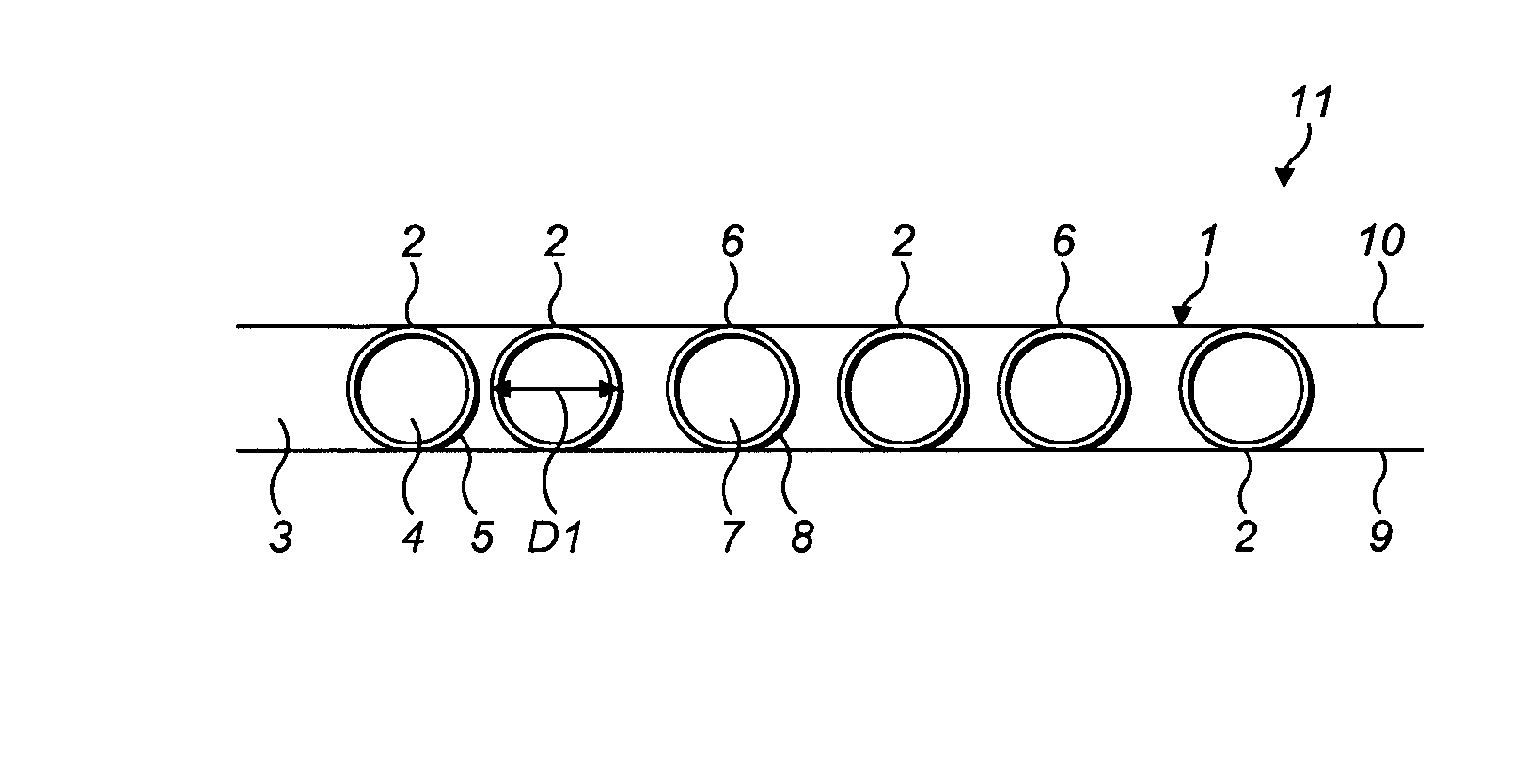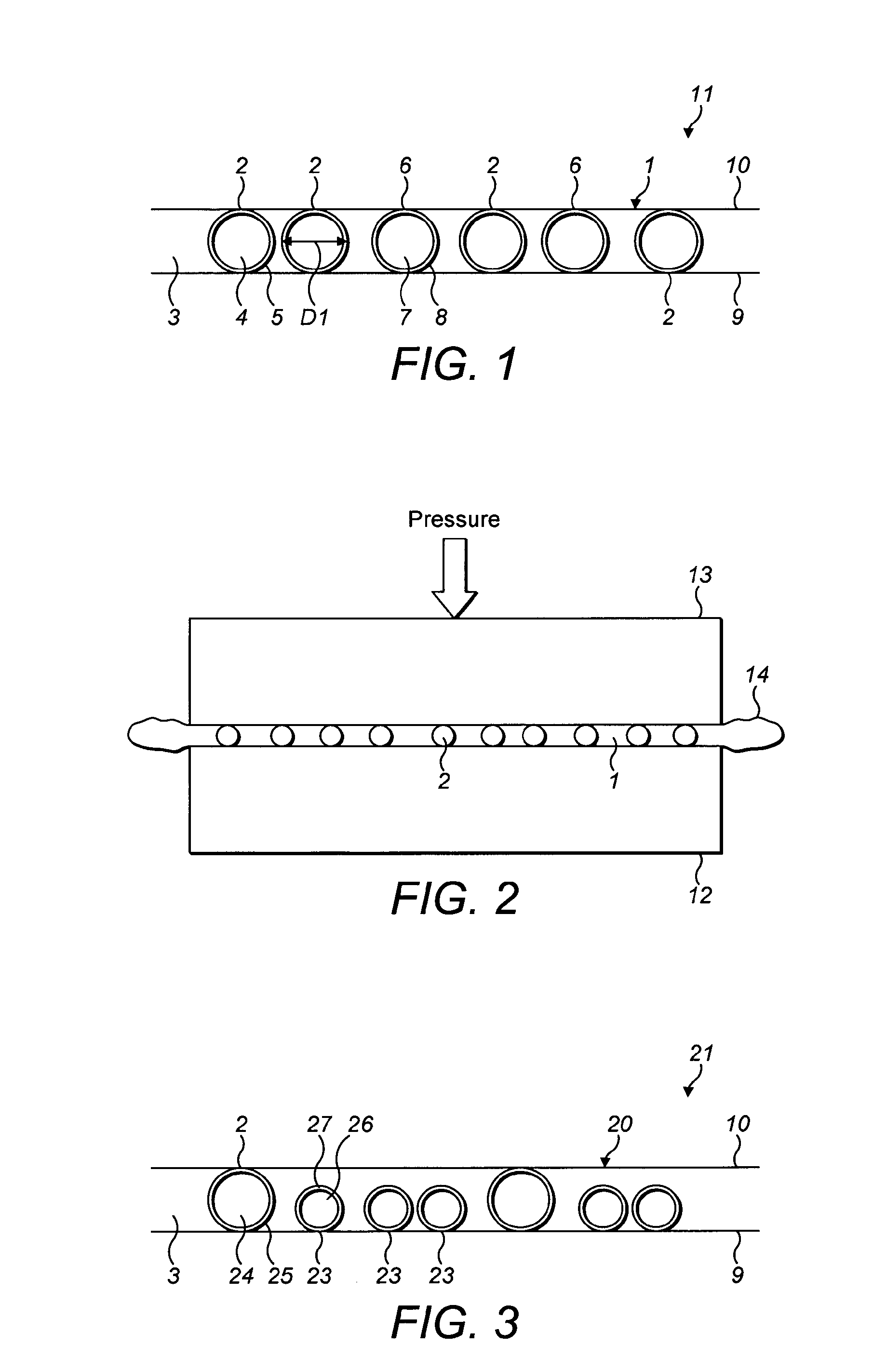Conductive adhesives
a technology of conductive adhesives and contact particles, which is applied in the direction of conductive materials, metal/alloy conductors, oxide conductors, etc., can solve the problems of difficult to predict the right combination of force, time and temperature, and difficulty in getting this right, and achieve the correct amount of deformation of contact particles. , to achieve the effect of correct process parameters, the problem of determining the correct amount of contact particles
- Summary
- Abstract
- Description
- Claims
- Application Information
AI Technical Summary
Benefits of technology
Problems solved by technology
Method used
Image
Examples
Embodiment Construction
[0021]The conductive adhesive is preferably an ACA, such as an ACF. Ideally, the adhesive material is a thermosetting or thermoplastic resin or rubber. Thermosetting resins are preferred. Possible thermosetting resins are for example, synthetic resins, such as, epoxy resins, melamine resins, phenol resins, diallyl phthalate resin, bismaleimidotriazine resin, polyesters, cyanoacrylates, polyurethanes, phenoxy resins, polyamides and polyimides; and rubbers and elastomers containing functional group(s), such as hydroxy, carboxyl, vinyl, amino or epoxy. Among them, epoxy resins are especially preferred.
[0022]Preferred epoxy resins are those based on bisphenol type, epoxynovolak resins and those made from epoxy compounds having in the molecule two or more oxirane groups.
[0023]It will be appreciated that the conductive particles and signal particles are arranged in a planar layer within the conductive adhesive. Ideally, that layer contains a single layer of particles, i.e. the particles a...
PUM
| Property | Measurement | Unit |
|---|---|---|
| Length | aaaaa | aaaaa |
| Fraction | aaaaa | aaaaa |
| Fraction | aaaaa | aaaaa |
Abstract
Description
Claims
Application Information
 Login to View More
Login to View More - R&D
- Intellectual Property
- Life Sciences
- Materials
- Tech Scout
- Unparalleled Data Quality
- Higher Quality Content
- 60% Fewer Hallucinations
Browse by: Latest US Patents, China's latest patents, Technical Efficacy Thesaurus, Application Domain, Technology Topic, Popular Technical Reports.
© 2025 PatSnap. All rights reserved.Legal|Privacy policy|Modern Slavery Act Transparency Statement|Sitemap|About US| Contact US: help@patsnap.com



